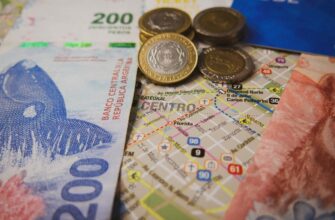## Why Anonymizing Your Crypto Wallet Matters
In today’s digital landscape, financial privacy is paramount. Anonymizing your cryptocurrency wallet shields your transactions from surveillance, reduces hacking risks, and prevents targeted attacks. While blockchain transactions are pseudonymous, sophisticated analysis can link wallets to real identities through IP leaks, exchange KYC data, or transaction patterns. This guide provides a secure, ethical approach to enhancing your crypto privacy without compromising security.
## Step-by-Step Guide to Anonymize Your Crypto Wallet Safely
Follow these steps meticulously to anonymize your cryptocurrency holdings:
1. **Create a New Wallet**: Generate a brand-new wallet using open-source software like Electrum or a hardware wallet (Ledger/Trezor). Never reuse old addresses tied to your identity.
2. **Acquire Crypto Anonymously**:
– Use decentralized exchanges (DEXs) like Uniswap
– Purchase via peer-to-peer (P2P) platforms with cash
– Mine cryptocurrencies
– Avoid KYC-enabled centralized exchanges
3. **Enable Tor/VPN Protection**:
– Route all transactions through Tor Browser or a no-logs VPN
– Configure wallet settings to use .onion nodes (Bitcoin) or integrated privacy networks (Monero)
4. **Utilize Privacy Coins**: Convert assets to privacy-focused cryptocurrencies:
– Monero (XMR) for default transaction obfuscation
– Zcash (ZEC) with shielded transactions
– Dash (DASH) PrivateSend feature
5. **Employ Coin Mixing (Cautiously)**:
– Use decentralized mixers like CoinJoin (Wasabi Wallet, Samourai Wallet)
– Avoid centralized mixing services due to exit scams and regulatory risks
– Mix in small, irregular amounts over time
6. **Implement Transaction Hygiene**:
– Never link old and new wallets
– Use new addresses for every incoming transaction
– Avoid revealing IPs via wallet connectivity
7. **Secure Physical & Digital Traces**:
– Dedicate a clean device for anonymous transactions
– Encrypt wallets with strong passphrases
– Disable metadata in transactions
## Best Practices for Sustained Anonymity
– **Regular Wallet Rotation**: Create fresh wallets every 6-12 months
– **Decentralized Storage**: Use IPFS or encrypted cloud for backups
– **Network Isolation**: Conduct transactions on public Wi-Fi (using VPN)
– **No Real-World Links**: Never connect anonymous wallets to:
– Exchanges with KYC
– Merchants requiring personal data
– Social media accounts
## Critical Mistakes to Avoid
– ❌ **Reusing compromised devices**: Old devices may have tracking software
– ❌ **Small mixing amounts**: Patterns in transaction values enable chain analysis
– ❌ **Ignoring metadata**: Wallet software often leaks OS/version data
– ❌ **Centralized mixers**: Services like Tornado Cash carry regulatory risks
– ❌ **Cross-contamination**: Transferring between identified and anonymous wallets
## Frequently Asked Questions (FAQ)
Is wallet anonymization legal?
Yes, privacy is legal in most jurisdictions. However, deliberately concealing transactions for illegal activities (money laundering, tax evasion) is unlawful. Always comply with local regulations.
Can I anonymize an existing wallet?
No. Wallets with transaction history are permanently tainted. Always start with a new wallet and transfer funds via privacy methods.
Do privacy coins guarantee anonymity?
They significantly enhance privacy but aren’t foolproof. Monero offers the strongest default privacy, while Zcash requires manual shielded transactions. Combine with other steps for maximum security.
How do VPNs/Tor improve wallet anonymity?
They mask your IP address, preventing location tracking and linking transactions to your network. Always verify no-IP-leak configurations before transacting.
Are hardware wallets necessary?
Highly recommended. They isolate private keys from internet-connected devices, preventing remote exploits while maintaining transaction anonymity.
What’s the biggest anonymity vulnerability?
User error. Reusing addresses, connecting to KYC exchanges, or leaking personal data during P2P trades compromises all other precautions.
How often should I repeat anonymization?
After major transactions or quarterly. Continuous monitoring via blockchain explorers (like Blockchain.com) helps detect potential de-anonymization patterns.
Implementing these steps creates robust financial privacy. Remember: Anonymization is an ongoing process, not a one-time action. Prioritize security at every stage, and never sacrifice verifiable safety for convenience.








